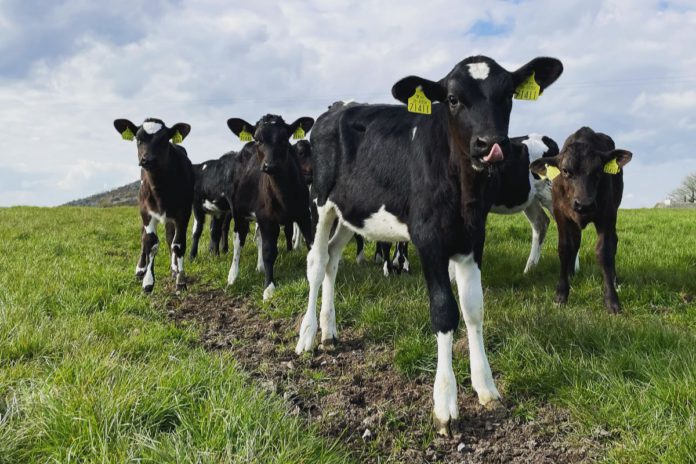Sexing Technologies will open the doors of a sexed semen lab at Teagasc Moorepark Animal and Grassland Research and Innovation Centre, next month.
This lab will provide a semen sorting service open to all companies in the Irish AI industry.
A new project at Teagasc Moorepark will use bovine assisted reproductive technologies to achieve two objectives:
- Use sexed semen to generate female dairy calves and reduce the number of male dairy calves;
- Use In Vitro Embryo Production (IVP). Purpose: Accelerate genetic gain in dairy breeds (EBI) and beef breeds suitable for crossing with dairy cows (DBI).
Sexed semen lab
According to Teagasc, a sexed semen lab in Ireland will increase the:
- Size of the team of bulls;
- Quality (EBI) of that team available to farmers. Eg: More bulls and higher EBI bulls selected for sorting.
In addition, the presence of a sexed semen lab in Ireland will provide access to a key tool to facilitate genetic gain.
Both X-sorted (female offspring) and Y-sorted (male offspring) semen will be potentially available from a wide range of bulls.
With future use of sexed semen in dairy herds to increase, Teagasc stated there are three consequences.
- Firstly, in the face of a marked decline in the number of male dairy calf births, the industry requires an effective strategy to breed the next generation of elite breeding stock that are suitable to sustain or accelerate genetic gain in the national herd (measured by EBI);
- Secondly, in the context of a smaller proportion of the dairy herd being inseminated with dairy semen, greater efforts are required to breed the next generation of elite beef breeding stock that are suitable for crossing with dairy dams that are not suitable for generating replacements (measured by DBI);
- Lastly, with increasing “scrutiny” on the beef value of the calves from dairy dams with poor beef merit, it is necessary to investigate the feasibility of mass-producing beef embryos for transfer into dairy dams that are not themselves suitable to generate replacement heifers. This will facilitate the generation of a beef calf with high economic value, being readily marketable to beef farmers.
IVP
Furthermore, according to Teagasc, a technology that would address all three of these objectives is In Vitro Embryo Production (IVP).
Dr Stephen Butler, Reproductive Physiologist at Teagasc, said:
“In Vitro Embryo Production involves the collection of oocytes from either live donors, in the case of elite genetic merit dams, or from ovaries collected after slaughter in the case of commercial beef embryos.”
“In all cases, the oocytes are fertilised and cultured in a lab for seven days. They are transferred to a surrogate dam synchronised to be on day seven of her oestrous cycle.”
“Using this technology, you can schedule an elite genetic merit dam to have oocytes collected weekly for several weeks.”
“This would facilitate the dam moving from having one calf per year to having multiple calves per year. This increases the chances of producing a calf with greater genetic merit than the current generation.”
Improving the financial value of calves from dairy herds
Michael Berkery, chairman of FBD Trust, said it has committed to providing support of €200,000 over the next four years.
“Commercialising the availability of sexed semen will greatly contribute to the sustainability of the Irish dairy and beef industries.”
“This will help to stimulate a marked increase in the demand for sexed semen to generate replacement heifers.”
“Also, it will stimulate greater usage of beef breed bulls in the dairy herd. It will improving the financial value of the calf crop from the dairy herd.”
“Following the recent phase of dairy herd expansion, this is a critically important technology for the Irish dairy industry,” he added.





